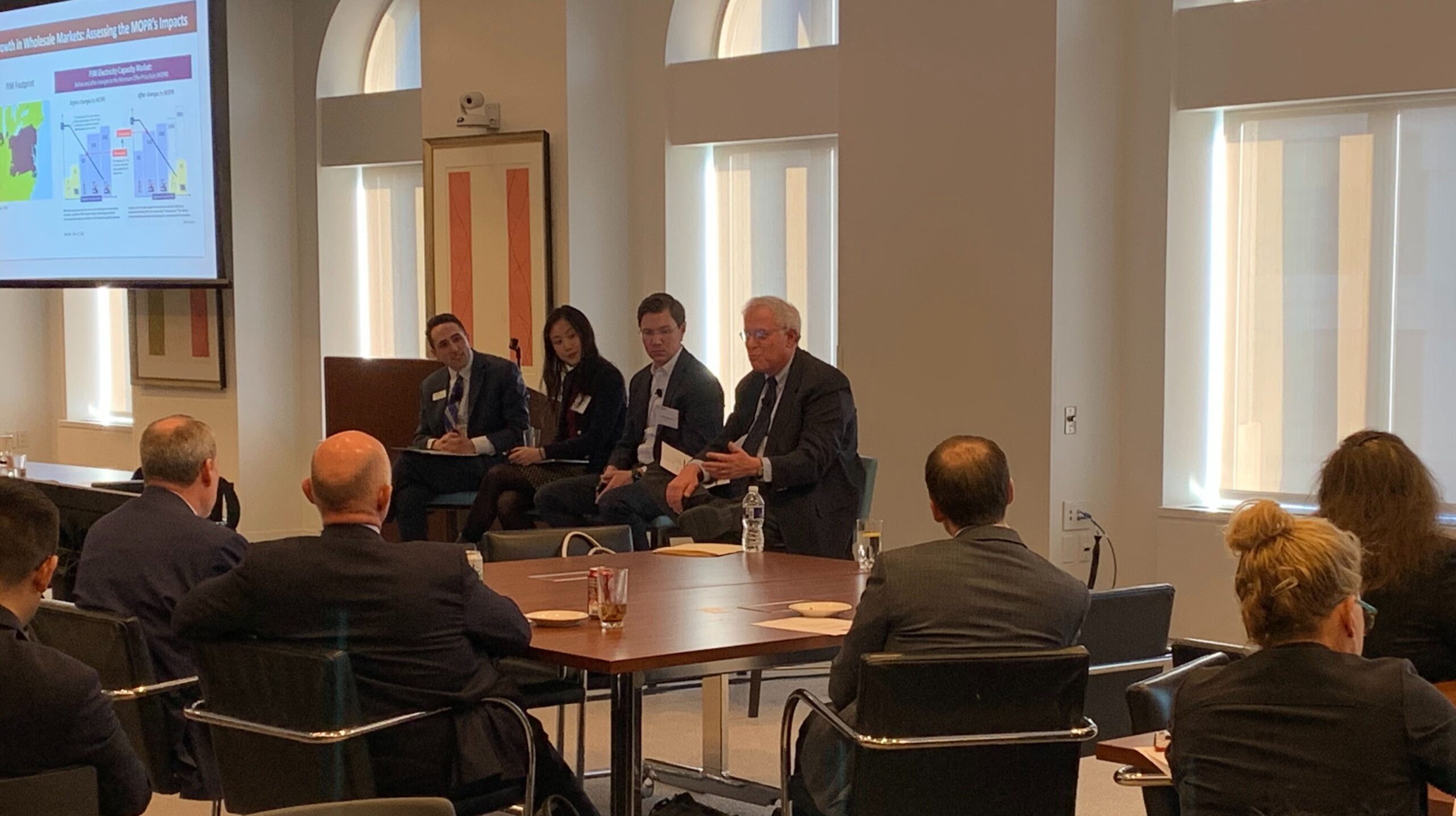Assessing the Impact of FERC’s MOPR and BSM Decisions on Wholesale Markets
April 2, 2020
By: Tyler Stoff
In early March, ACORE members joined an Executive Meeting in Washington, D.C. ahead of the 2020 ACORE Policy Forum to assess the effects of emerging power market and integration issues on renewable growth. Discussion included an analysis of FERC’s recent and controversial expansion of the Minimum Offer Price Rule (MOPR) in PJM and Buyer-Side Mitigation (BSM) measures in NYISO, their implications for renewable energy growth and possible paths forward.

I was fortunate to moderate a timely discussion with experts from PJM, BayWa r.e. and Duke University. We began our panel by exploring the origins of MOPRs, which are administrative price floors designed to mitigate the ability of buyers to improperly set the clearing price in wholesale power markets.
FERC’s December 2019 decision greatly expanded the MOPR in PJM’s capacity market to cover nearly all new renewable generation, effectively reducing the impact of regional, state and local policies that were created to accelerate the transition to renewable energy, such as renewable portfolio standards. FERC argued that these pro-renewable policies constituted “out-of-market” subsidies that depressed capacity market prices, which are solely within FERC’s jurisdiction. FERC’s order did not specify key details, such as what state policies counted as subsidies. In January, ACORE filed a Request for Rehearing on FERC’s MOPR order, stating its effect “will be to pad profits for incumbent fossil fuel generators, on the backs of customers forced to pay more, by preventing state-supported clean generators from clearing the capacity market.”
The panel explored how the MOPR could impact developers, corporate offtakers and the generation mix at large, as new renewables will be required to offer their services into the capacity market at higher prices. As of the meeting, these prices were unclear, to be calculated by PJM as the hypothetical cost incurred by resources entering the capacity market in the absence of so-called “state subsidies.” With renewables in PJM receiving as much as 20% of their revenue from the capacity market, hindering the ability to clear this market could be devastating.
As a result, this novel market design is leading to investment uncertainty, development uncertainty, and state policy uncertainty in the PJM region. The possibility that some PJM states might rebel against FERC, exiting the PJM capacity market altogether, sparked the greatest diversity of opinion among meeting participants. Through an untested legal mechanism called the Fixed Resource Requirement (FRR), states can sidestep the MOPR, creating an in-state alternative solution to federal resource adequacy requirements, at an unknown cost to ratepayers and generators alike. With the MOPR and FRR both representing new policy directions, the safer business option was unclear. This unpredictability may freeze investment or cause capital to flee PJM altogether as developers find more secure bets in other markets, and corporate offtakers find more affordable regions from which to purchase clean electricity.
Panelists then contrasted FERC’s PJM MOPR decision with its subsequent NYISO BSM decision, which dealt a more limited blow to renewables in the Empire State with greater resource exemptions and a narrower geographic footprint. The panel concluded by exploring ways to address FERC’s concerns in enacting the MOPR and BSM, while also advancing the transition to renewable energy. The panelists each agreed that carbon pricing represented a valid avenue for further discussion.
Soon after the meeting, PJM submitted to FERC its proposal on how to implement the MOPR. This required compliance filing, drafted after extensive discussions with the renewable sector, would allow resources the ability to apply for unit-specific exemptions to the MOPR. Such exemptions are an administratively burdensome process that nevertheless could spare certain generators from a price floor if they agree to forgo all revenue classified by PJM as a state subsidy. PJM also stated that it would not consider voluntary renewable energy credits, a popular tool of corporate offtakers, as subsidies. While PJM’s compliance filing represents an effort to diffuse a tense situation, it is still subject to FERC alteration and approval. The renewable industry continues to wait for a final slate of details from the Commission.
Part 2, Examining Priorities for Transmission and Renewable Integration, will be released later this month.
Join leaders from across the renewable energy sector.

What will our next 20 years look like? Here’s the truth: they’ll be better with ACORE at the forefront of energy policy.
Shannon Kellogg
Amazon Web Services (AWS)
